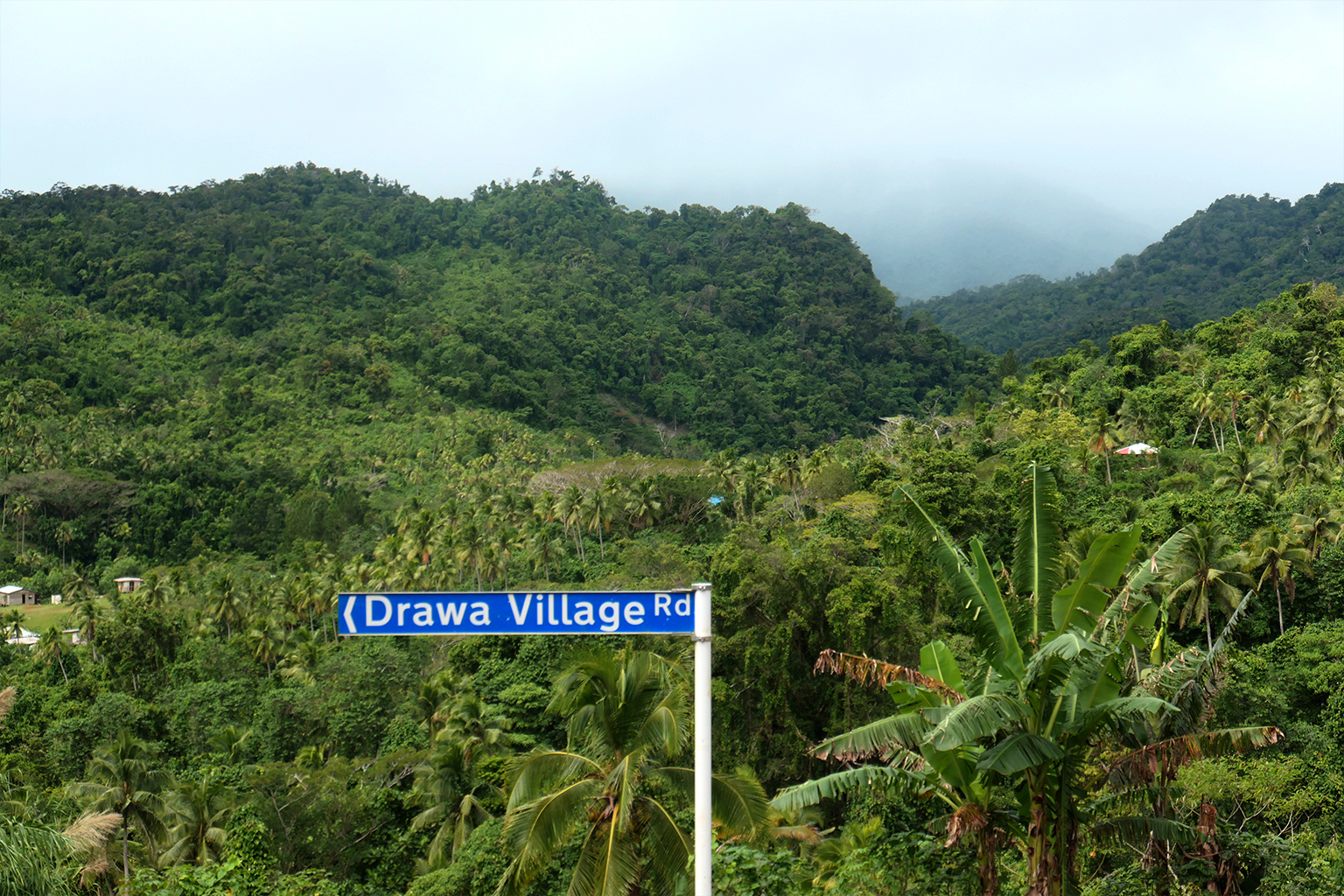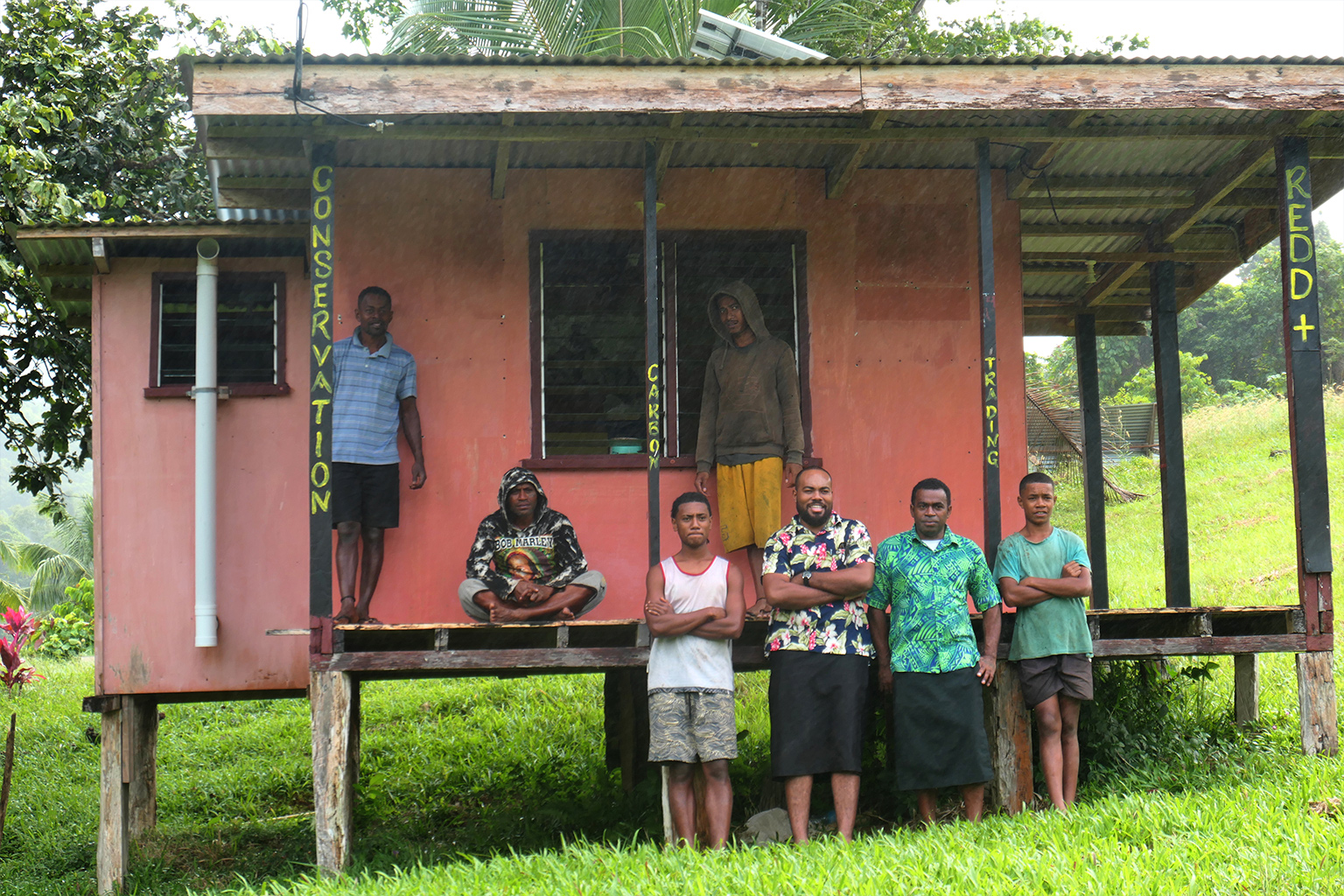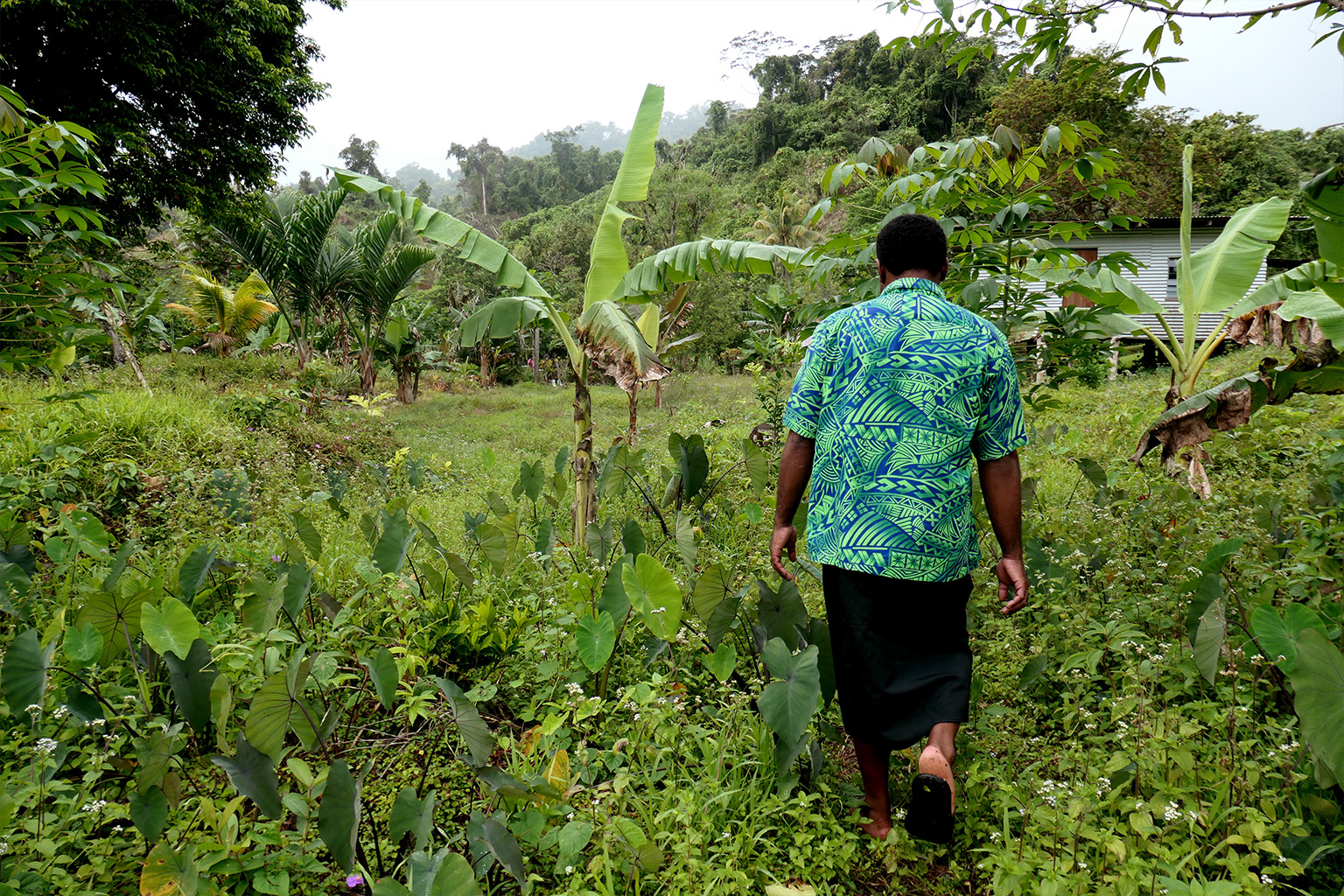- Fiji’s first verified forest carbon credit project is based in the Drawa rainforest on the country’s largest island, and has been earning income for its Indigenous landowners for five years now, in exchange for keeping their forests standing amid pressure from logging companies to fell its ancient trees.
- To make sure the project offers a compelling alternative to quick cash from logging permits, alternative livelihood opportunities are important ways to provide day-to-day income for individuals, alongside the cash from carbon credits that’s disbursed to mataqali (clans) on a quarterly basis and often used for collective projects.
- A number of local young men have been trained as rangers to monitor the protected areas, while other villagers, mostly women, are benefiting from their roles in a growing rainforest honey business — though scaling up the business to a more lucrative level remains a challenge.
LABASA, Fiji — No one finds their way to the village of Drawa by accident. To get there, you must first board a tiny plane to Labasa, the biggest town on Fiji’s Vanua Levu Island. Driving southwest past hectares of sugarcane plantations and forests riven with gashes of red earth, you’ll pass pickup trucks piled high and wide with tightly bound stacks of the starchy cane stems, and loggers tugging loads of freshly cut tree trunks to one of the island’s many sawmills.
When you turn off the highway onto an unassuming gravel side road in the center of the island, your four-wheel-drive vehicle will shudder and shake as the track deteriorates into humps and hollows of greasy orange mud. But the view more than makes up for it: you’ll ford perfectly clear rivers and climb precipitously through tracts of deep-green cloud forest, before eventually parking among a scattering of colorful timber houses at the bend of a river at the very end of the road.

This small settlement is a hub for Fiji’s first verified forest carbon project, which has been selling carbon credits on the voluntary market through the Plan Vivo standard since 2018, with the help of local NGO Live & Learn Environmental Education and the Australia-based Nakau Programme.

Eleven years ago, a handful of local chiefs, including Drawa’s Timoti Ratusaki (pictured below), formed the Drawa Block Forest Communities Cooperative (DBFCC) and signed up to set aside adjoining sections of their ancestral forest from timber harvest — and earn cash instead from keeping their forests intact.

There’s been considerable controversy over the integrity of carbon credits in the last couple of years, with many projects deemed worthless in terms of genuinely preventing deforestation and forest degradation, and concerns rising about violations of Indigenous land rights and unfair benefit-sharing mechanisms.
But for locals in Drawa, this project offers a compelling alternative to the consistent temptation of easy money from the logging companies that haunt the area, which contains some of Vanua Levu’s last vestiges of primary rainforest and is an important habitat for 385 plant species and a wide range of native animals, including 22 bird species, two types of endangered skinks, and the endemic Fiji ground frog (Cornufer vitianus).
Drawa is not alone in its support for a carbon credit project. In May, a group of Indigenous-led organizations backed REDD+, short for reducing emissions from deforestation and forest degradation, arguing that it provides much-needed funding for economic development and their conservation work, despite its shortcomings.

While developing the project in Drawa, it was important to the landowners that the setup didn’t prevent them from accessing the forest and making use of it in sustainable ways. People here rely heavily on their land, and “locking it up” would have had negative results, said Beato Dulunaqio, a senior project officer at Live & Learn.
“I think it’s really key that they’re not being deprived of food that they would usually go and get from the forest every single day,” he said. “That’s definitely central to why they haven’t gone down the other road [of timber harvest] instead of conservation.”

“We can still gather medicines and herbs, and go hunting in the area,” said Jerry Lotawa, the village’s lead ranger and grandson of Chief Ratusaki. “That’s critical: when you’re setting up a project like this, you need conditions that are acceptable at the community level.”

Training younger men in the community as forest rangers has proved a helpful way to make the most of local knowledge for monitoring purposes, while providing a reliable source of income that doesn’t involve forest exploitation. “It takes about two hours to walk to the project area. We have to climb up the hills and cross the river to get there,” said Drawa ranger Inoke Rasaciva.
“When we go, we usually stay there a while in a bush camp to check over the plot area, eating prawns and eels and hunting for pigs. We do that four times a year, and if a report comes that people have seen on the satellite that someone’s cutting down a tree near the plot area, we have to go up and check it then, too.”

As another means to develop sustainable income sources that don’t degrade the forests, the communities have set up a rainforest honey business. Each village has its own beehives, equipment and designated beekeepers, most of them women. They sell their honey to the co-op, and it’s then marketed and sold externally.
“We have to check our hives once a month, and if we see any problems we have to address them,” said Waita Curuvale, a founding member of her community’s beekeeping committee who now sits on the DBFCC. “If it’s raining a lot, we have to put sugar out for the bees so they can feed, and if the hive is getting too full then we have to move some of the bees elsewhere so they don’t swarm, otherwise we lose them all.”

Demand is growing for Drawa’s honey, Curuvale said. “This year, for the first time, we ran out of honey to sell before the harvest season began. We have a lot of buyers; we are becoming more and more well-known.”
But helping these alternative livelihood opportunities stick is not without its challenges: to get the business to truly take off, the committees need considerable extra cash to develop proper processing and packaging protocols, said Live & Learn project officer Vatea Ravoka.
“I’d really like to see [the honey business] grow, so that one day they will be able to say, ‘We are surviving from this, we are able to build a house because of this,’” she said.
Many young people still leave the villages in search of higher incomes in urban areas, and frequently end up in more challenging economic situations without the access to land and community support they receive in their villages.
“[Young people] don’t always realize that they have very high-value resources around them,” Ravoka said. “The money is right here, it’s not in town.”

On this particular August morning, early in the harvesting season, Batiri’s beekeepers cart the honey-packed frames from their hives to the community house in a wheelbarrow, where the women use large flat knives to scrape the wax cappings from the comb and expose the liquid inside. Then they pass the frames to two men who load them inside the large metal vat of a hand-powered extractor, then use their combined force to spin the honey out of its casings.
When all of the frames have been uncapped and spun, beekeeper Ani Matamosi sets up a sieve and bucket below the extractor tap, then flicks it open. As the glossy thread surges forth, its color and abundance seem particularly symbolic: buckets of gold gleaned carefully from the forest — with every hope of doing so for generations to come.
Banner image: Drone shot of Drawa village. Image by Rob Rickman.
‘The forest is so much more than money’: Q&A with Fijian carbon project ranger Jerry Lotawa
Related listening from Mongabay’s podcast: We talk about carbon trading in Papua New Guinea and how its structure so far impacts Indigenous land rights. Listen here:
FEEDBACK: Use this form to send a message to the author of this post. If you want to post a public comment, you can do that at the bottom of the page.
